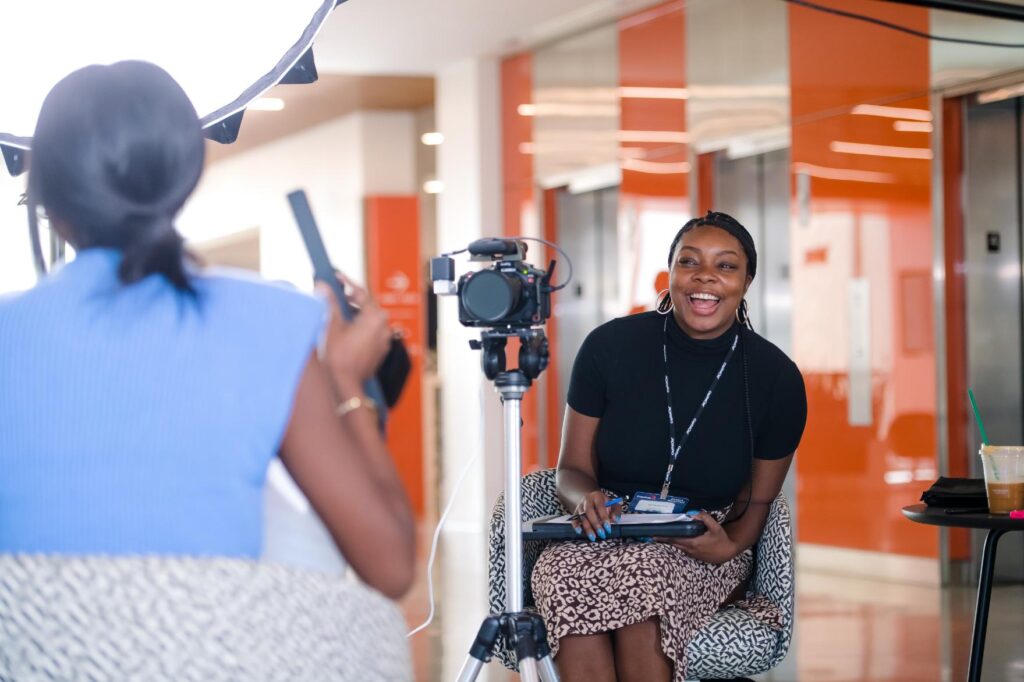5 Employer Branding Trends to Know for 2025
2025 content planning is upon us! As you set media budgets and priorities for the year ahead, it’s important to check in with greater employer branding trends so your content strategy aligns with candidate expectations and keeps up with the competition.
You know we’ve got you covered.
Here at Stories Inc., we have the privilege of working with employer brand, talent acquisition, and communications teams to plan and execute their employee storytelling content strategies. This list was inspired by the most pressing and strategic culture content projects we are kicking off in the new year. And, what we’re hearing as major priorities from our audience of employer brand, communications and people leaders.
Let’s dive into it!
But first: Celebrating the maturity of our industry
As we were identifying our trends for the new year, we had an aha-moment: wow, has the employer brand industry come a long way! What was once a niche area of talent acquisition has grown into a must-have strategic function for businesses.
What does that mean? We’re seeing more companies employing always-on content strategies, personalizing for global and local markets, and designing nuanced approaches tailored to different audiences, channels, and stages of the candidate journey. Go, you!
This level of sophistication is a testament to the industry’s maturity—and it’s a trend that will only accelerate in 2025.
Trend #1: Taking a More Nimble Approach to EVP Creation
Gone are the days when an Employee Value Proposition (EVP) was a static artifact that took months to develop and was expected to last for years. Today’s fast-changing work environments demand flexibility. Enter “Agile EVPs.”
An Agile EVP prioritizes speed and adaptability without sacrificing authenticity. It embraces the changing nature of your organization by using employee experiences to fine-tune your messaging in real time. But you don’t need to throw out your previous EVP efforts. An Agile EVP uses what’s been built before and enhances its messaging on an ongoing basis so candidate expectations always meet reality.
An effective approach to Agile EVPs is crafting updated messaging while simultaneously creating content. By using filmed employee interviews to inform updates to your EVP and repurposing those same stories for EVP activation, you save time and resources.

The result? A nimble, dynamic EVP process that evolves in real-time as company culture shifts. Continuous employee storytelling ensures your EVP remains relevant, resonant, and responsive to the voice of your workforce.
Trend #2: Showing Purpose & Impact—with a Twist!
Purpose-driven messaging has long been a cornerstone of employer branding. And in 2024, 86% of Gen Z and millennial employees reported that having a sense of purpose is very or somewhat important to their overall job satisfaction and well-being.
In 2025, we expect to see employer brand teams doubling down on communicating purpose by showcasing the broader impact of their work. Think: connecting workplace culture to sustainability, social responsibility, and larger social impact initiatives.
We’re also seeing a growing trend of employer brand videos featuring not just employees but also customers and partners who benefit from the company’s products or services. Watch the video below from Relativity, featuring a customer who uses its legal technology to pursue justice in wrongful conviction cases.
Trend #3: Tactical Hiring Content
In our 2024 mid-year trends we identified tactical hiring content as a critical trend—and it’s not going anywhere in 2025.
In the current employer’s market, employer brand leaders are increasingly focusing on strategic hiring content tailored to specific job categories and office locations. Giving realistic insight into the job increases candidate quality (and may even decrease total applications) by helping talent self-select in and out.
Realistic Job Previews, office tours, and hiring manager videos are just a few examples of content that provide candidates with a clear, authentic view of what it’s like to work in a specific role or team. This practical, job-focused content helps candidates opt in and out and increases hiring efficiency.
In this realistic job preview from BAE Systems, we get a glimpse into Nakia’s role as an Operations manager—from coordinating with craftspeople and government stakeholders to ensuring safety and operational excellence on Navy vessels.
Trend #4: Rise in Bite-Sized Social Content
To connect with candidates on platforms like Instagram, TikTok, and LinkedIn, employer brand leaders are turning to bite-sized, platform-optimized videos. Instead of reposting long-form culture videos, companies are creating short-form content designed to fit each platform’s unique style.
Why does this matter? Data shows that 80% of LinkedIn videos and 85% of Facebook videos are watched without sound. This makes it essential to use graphics and captions to ensure your message comes through clearly—even without audio—like this example from Dell Technologies:
Instead of sharing long-form culture videos, optimizing employee spotlights and quick culture highlights for social fosters engagement and loyalty in a fast-paced digital world.
Bite-sized content not only meets talent where they are but also offers another critical advantage: speed. Short-form videos, graphics, and carousel posts are much faster to create than long-form pieces. This makes them perfect for an always-on content strategy, allowing you to quickly adapt messaging for seasonal hiring campaigns, shifting business needs, or timely moments—like this Father’s Day video from Stellantis:
By integrating bite-sized content into your strategy, you can maintain an active presence across platforms, keep your content fresh, and ensure your brand’s voice is always part of the conversation.
Employer Brand Trend #5: Dedicated Storytelling Teams
Storytelling has evolved from a tactical effort to a strategic pillar of employer branding and corporate communications. Over the past year, we’ve seen companies formalize this focus by creating dedicated, centralized storytelling teams and roles like “Director of Team Member Stories.” This shift signals a new era where storytelling isn’t just encouraged but empowered at an organizational level.
One professional services company created a Storytelling Center of Excellence, bringing together teams involved in organizational storytelling such as employer branding, alumni communications, and social media. This group meets regularly to share ideas and often invites outside experts to discuss storytelling best practices and trends.
Employee storytelling is a core focus for the Center. For instance, the alumni services team launched a series spotlighting former employees who started their own businesses. This campaign celebrates a typically taboo topic in consulting while keeping high-performing alumni engaged. It also signals to ambitious candidates that an entrepreneurial spirit is valued and supported.

At other organizations, dedicated storytelling teams streamline recruitment marketing and employer brand efforts by creating templates, processes, and best practices that local teams can easily adopt. This approach allows for greater efficiency and ensures all content aligns with the overall employer brand, while still leaving room for local teams to add their unique perspectives.
By balancing centralized resources with localized creativity, dedicated storytelling teams help organizations scale their efforts, ensuring employee stories resonate with diverse audiences while supporting a cohesive employer brand identity.
Employer Branding Trends: Bring it on, 2025!
With these trends shaping the year ahead, 2025 promises to be a dynamic time for employer branding. From agile EVPs to bite-sized social storytelling, the opportunities to innovate and connect with candidates are endless.
Ready to embrace what’s next? Let’s make 2025 your most impactful year yet — get in touch with our team!

